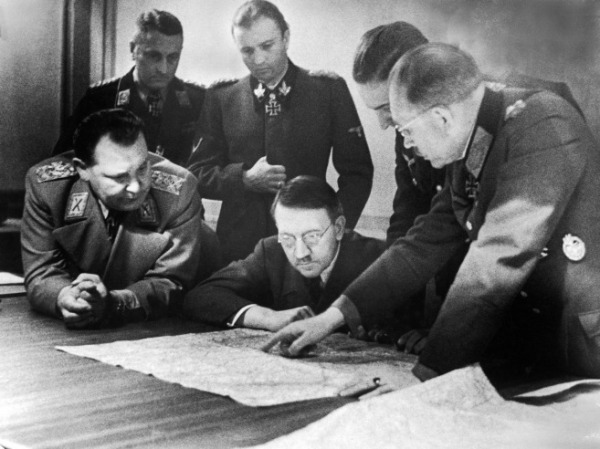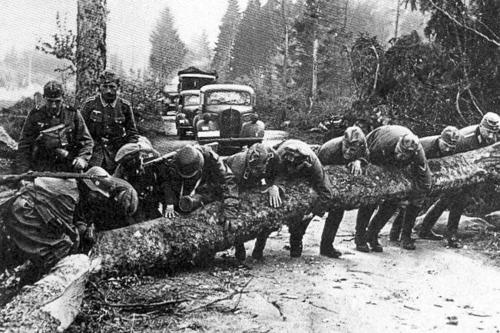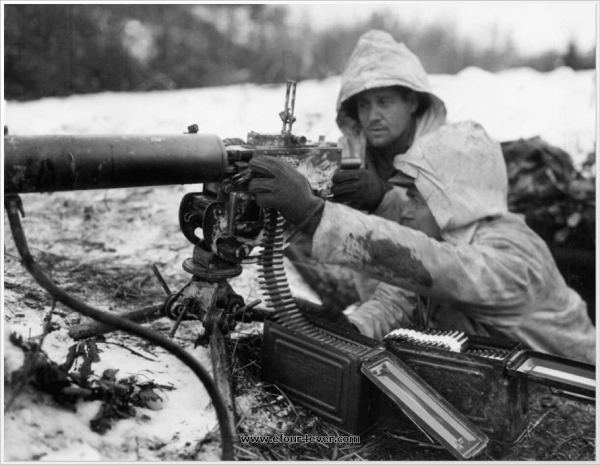Call it Germany’s last gasp.
On Dec. 16, 1944, about five months before the war in Europe finally ended, Germany launched a surprise offensive in the heavily forested Ardennes region of Belgium, France and Luxembourg. Facing the Germans was a U.S. force supported by French and British troops.
When the guns fell silent about a month later, Germany had been soundly defeated in what was dubbed the Battle of the Bulge. But in victory, the Americans paid a very heavy price — 19,000 soldiers killed in the bloodiest battle of the war in which the United States was directly involved.
With its 7oth anniversary fast approaching, British historian Peter Caddick-Adams has written a thorough account of a momentous military engagement that turned the tide in favor of the Allies. Snow and Steel: The Battle of the Bulge, 1944-45, published by Oxford University Press, draws on U.S. and German archival sources and interviews with more than 100 participants.
As the author points out, Germany committed itself to this battle in spite of a succession of setbacks in 1944.
The Allied invasion of Normandy in June of that year had cost the Germans dearly, as had subsequent Red Army advances on the Russian front. Shortly afterward, Hungary, a German ally, attempted to extricate itself from the war. In August, Bulgaria withdrew from the Axis alliance, and in September, Finland followed suit.
On the home front, disaffected German army officers tried to assassinate Adolf Hitler, who retaliated by executing 5,000 of his opponents.

In Caddick-Adams’ view, the Ardennes campaign was Hitler’s response to the July 20 assassination plot. “The concept in Hitler’s mind was not merely of a military counter-attack, but a political game-changer that would shatter the coalition ranged against him,” he writes. “It would also restore the power and prestige of the Third Reich and — crucially — of his own person within the regime.”
Caddick-Adams suggests that Hitler’s mental and physical faculties were excessively impaired when he decided to go ahead with the Ardennes offensive. A German general who met him that summer remembered Hitler as “a tired, broken man.”
To Caddick-Adams, Germany’s decision to go for broke “made no sense at the time and makes none with hindsight.” It was driven by Hitler’s vision, determination and willpower. In general, the army opposed it. Hitler, however, was adamant — falsely believing that the American army in the Ardennes could be rolled back.

Despite his illusions, Hitler could at least rely on German industry to supply the materiel required to carry out the offensive. Thanks to millions of slave laborers, German factories in 1944 were manufacturing more tanks and planes than in any of the previous five years of the war.
Amid cold weather, deep snow and dense fog, the Germans, with around 200,000 soldiers, initiated hostilities on Dec. 16, catching the Allies off guard. Arrayed against them were 85,000 Americans. Eventually, the United States would commit 610,000 soldiers to the task of smashing the Germans, who fought ferociously but were were poorly trained and short of equipment.
Caddick-Adams — a major in the British army who has served with U.S. forces in Bosnia, Iraq and Afghanistan — examines the battle at great length and in minute detail. And in conclusion, he compares it to the 1973 Yom Kippur War, which pitted Israel against a coalition of Arab armies. Like the Israelis, the Americans were lulled into a false sense of security and assumed that the Germans were exhausted and demoralized.

A combination of American self-deception, overconfidence and careless appraisal of German capabilities proved to be disastrous. But at the end of the day, as Caddick-Adams observes in this massively researched and expertly written book, the battle “deprived (Germany) of the ability to launch another major attack in the west or east again.”
In short, it was a decisive battle that dashed all hopes of a German victory in the war.
